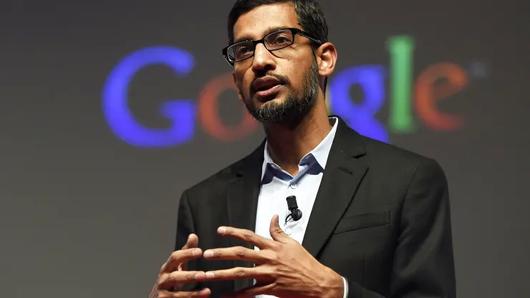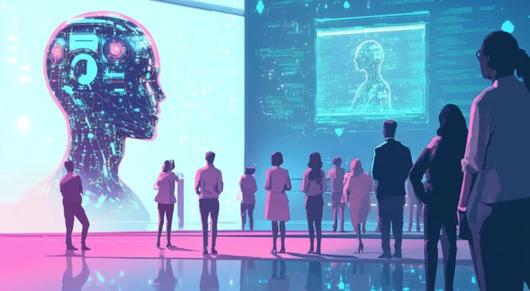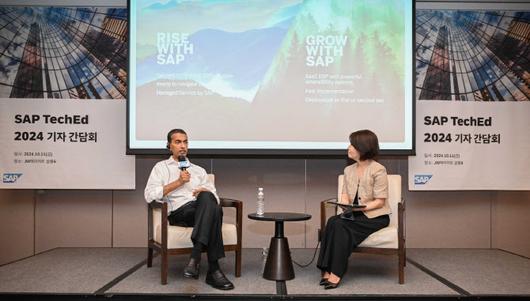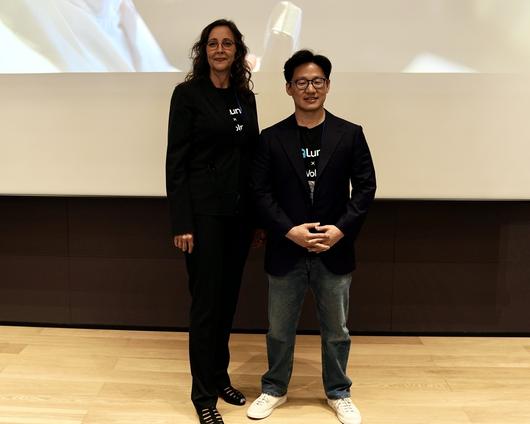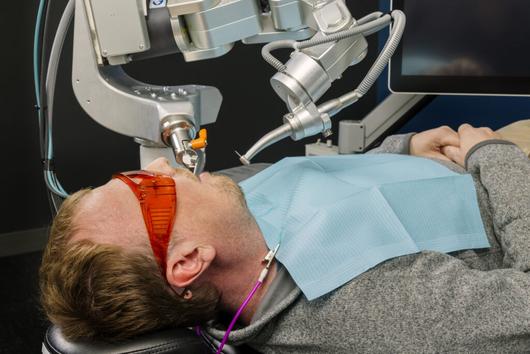Gartner pointed out ‘autonomous AI’ as an innovative new technology to pay attention to in the 2024 New Technology Hype Cycle. Recently, concerns about the chasm of major investors such as Goldman Sachs, Sequoia Capital, and Barclays were dispelled. ‘Autonomous AI agent’ can operate, improve, and make effective decisions on its own. Enter the competition
The generative AI technology competition, which was triggered by OpenAI’s ChatGPT at the end of 2022, has continued to undergo upheaval every year since then, making us feel that we are entering a different era than before.
However, there have been recent criticisms from major global investment companies such as Goldman Sachs that too much energy is being expended in situations where AI technology development is not cost-effective or does not work properly. There are also concerns about the so-called ‘chasm’ (temporary decrease in demand) due to the number of ChatGPT users, which has drastically decreased compared to the beginning.
Accordingly, the industry, including AI technology companies, is drawing a line against these concerns and stating that there will be no ‘AI Winter’ like the past. A representative example is Google CEO Sundar Pichai’s statement that ‘the risk of underinvestment is dramatically greater than the risk of overinvestment.’
In other words, the level of generative AI technology currently being introduced is only at the very beginning, and it is premature to judge whether it is a bubble. Rather, the consensus is that AI technology will create greater innovation and markets in the future. Behind this is the perception that “until recently, AI technology remained a technology rather than a product, and market formation is just beginning.” As if to add strength to that perception, Gartner recently also announced 25 innovative technologies through its ‘2024 Hype Cycle for Emerging Technologies’ report, again including ‘autonomous AI’, ▲developer productivity ▲overall experience ▲ It has been categorized into four major trends, including human-centered security and privacy programs.
“Business focus is shifting from expectations of foundational models to use cases that drive return on investment (ROI),” said Arun Chandrasekaran, senior VP analyst at Gartner. “Generative AI is going beyond the peak of inflated expectations. “The emergence of autonomous AI is accelerating,” he predicted.
In fact, this year, AI service companies in each field, including global big techs that had previously focused on the foundation model, are introducing autonomous AI agents and beginning to innovate AI productivity and monetization in vertical areas. So what is ‘autonomous AI’ that is dispelling concerns about the AI chasm? And what kind of innovation are they pursuing?
It’s different than before, the 3rd AI boom will continue
The word ‘AI’ first originated at Dartmouth College in 1956. It was a time when there were no computers, but it was the beginning when researchers gathered together and thought that they could imitate human intelligence. Of course, it was not easy to imitate human intelligence in a time when there were no computers or even data. Therefore, there were two ‘AI Winters’ from 1974 to 1993. AI technology remained stagnant for a while, but ‘Deep Blue’, introduced by IBM in 1997, and ‘Watson’, introduced in 2011, continued the trend by suggesting possibilities one after another, and finally Google DeepMind in 2016. The developed AlphaGo defeated Lee Sedol, a 9-dan player, at Go, showing tremendous progress in the 20 years since Deep Blue.
OpenAI’s chat GPT appeared in 2022, six years later. In less than two years, generative AI has led technological progress and paradigm changes that go beyond the AI technology development that took place over the previous decades.
In particular, experts are pointing to next year as the time when the formation of a market based on AI technology will begin in earnest. Such a movement is already starting this year. ‘Autonomous AI’, which includes ▲multi-agent system ▲large-scale behavioral model ▲machine customer ▲humanoid work robot ▲autonomous agent ▲reinforcement learning, is becoming the key.
While there was controversy over false information and bias in early generative AI at the level of combining learned words and sentences, autonomous AI that has gone through a reinforcement learning process through human feedback operates and improves on its own and can make effective decisions even in complex environments. The system is evolving.
What are the characteristics of an autonomous AI agent?
After the OrsonSource app called Auto-GPT was released in May last year, developers continued to try using this framework for services in each area. This led to the development of AI technology-based services called ‘AI Agent’ or ‘AI Co-Pilot’, led by each tech company.
AI agents are characterized by using various AI technologies such as natural language processing (NLP), machine learning (ML), and data analysis to understand human requests and provide appropriate answers or actions. Chatbots, virtual assistants, and recommendation systems all fall into this category.
Here, technological progress has been made by connecting foundation models such as GPT-4 with Auto-GPT, and AI agents are further divided into ‘Autonomous AI Agents’, so-called ‘autonomous AI agents’ and ‘interactive AI agents’. Done.
The characteristic of autonomous AI agents is that, unlike existing ones, they make decisions and act on their own without user intervention. Monitors the environment on its own and makes independent decisions based on collected data. At this time, the autonomous AI agent utilizes external tools such as browsers, AI models, storage, and computing engines and performs tasks with complete autonomy. Another feature is that the task performance process and observation results are stored in memory and reflected in the next task performance.
It operates as a human-like work process by defining goals, analyzing tasks, determining the order, executing tasks directly using various tools, then evaluating the results and reflecting them in performing the next task.
Before the emergence of autonomous AI agents, this was a technology that had been applied experimentally by expert groups such as developers, but commercialization services have recently emerged in each vertical area, attempting to monetize AI technology.
Autonomous AI introduction attempted in each business area
Gartner’s ‘2024 New Technology Hype Cycle’ predicts that technological progress in autonomous AI will ‘proceed gradually.’ In other words, this means that more research is needed on ‘AI assistants’ like Dr. Cheokcheok, who communicate with humans and perform all tasks perfectly on their own, as seen in science fiction movies.
However, what is noteworthy is that, as mentioned earlier, services and technological attempts utilizing autonomous AI are already underway in each vertical area.
Recently, SAP, a German company that boasts the world’s largest market share in the business application software field, has expanded the functionality of its AI-based co-pilot service, ‘Joule’, which is about to be launched a year ago, and introduced a collaborative AI agent function. Its characteristic is that it deploys AI agents specialized in processing specific tasks, collaborates in complex business workflows, and helps coordinate strategies to achieve common goals. Especially in dispute management applications, these autonomous AI agents are used to analyze and resolve dispute resolution scenarios such as inaccurate or missing invoices, unapplied credits, and duplicate or declined payments. In financial accounting use cases, autonomous AI agents are used to streamline key financial processes such as bill payment, invoice processing, and ledger updates, and increase efficiency by quickly resolving discrepancies or errors.
Salesforce, an American company that promotes itself as a cloud-based CRM company, recently unveiled its autonomous AI agent ‘Agentforce’ at its annual event ‘Dream Force 2024’. It is characterized by helping members of various organizations such as sales, service, marketing, and commerce quickly utilize autonomous agents at customer contact points based on pre-built templates.
Salesforce said, “In the past, AI chatbots and co-pilots moved according to human instructions, but Agent Force is based on the ‘Atlas Reasoning Engine’ and can autonomously respond to customer inquiries immediately and accurately 24/7 without human instructions. “It is characterized by being integrated with the data cloud and operating independently according to the organization’s guidelines based on vast data and metadata resources.”
Salesforce aims to activate 1 billion agents by the end of 2025, and plans to support the work of employees in various industries around the world through Agent Force.
Meanwhile, attempts are being made to introduce autonomous AI in games. AI is applied to non-player characters (NPCs). A representative example is the AI NPC game ‘Uncover the Smoking Gun’ developed by ‘Relu Games’, a development studio under Krafton. This is a mystery game in which the protagonist becomes an investigator, investigates the crime scene from a first-person perspective, and interrogates AI characters in natural language to uncover the truth of the case.
It is known that the development team applied OpenAI’s latest AI model, GPT-4o, in the production of ‘Uncover the Smoking Gun’. Because of this, the AI NPCs in this game have a very wide degree of freedom because they interrogate suspects based on chat, unlike NPCs in existing games that follow set choices. Even when asked questions that have nothing to do with the investigation, they give answers in some form, and sometimes the AI characters in the game even tell intentional lies. This is attracting attention as a technology that can save millions of dollars in costs by replacing the existing method of writing large amounts of dialogue and using voice actors.
NCSoft is also known to release a new product powered by autonomous AI NPC next year. They are also planning to install AI NPCs, which have already been applied to some of the representative ‘Lineage’ series, in all of their games.
The industry is predicting the emergence of virtual reality (VR) games that will provide unprecedented immersion when AI NPCs are integrated into games that maximize the player’s freedom.
Meanwhile, the healthcare industry is also attempting to introduce autonomous AI. Lunit, a developer of AI imaging diagnostic devices, became a hot topic last May by announcing an M&A to acquire 100% of the shares of Volpara, an American AI-based breast cancer screening platform company.
Another achievement of M&A that Lunit points out is none other than the combination of the artificial intelligence technologies of both companies. Lunit plans to use the multinational and multiethnic clinical data secured by Volpara to build a foundation model that can be applied regardless of conditions and environments, and to build an ‘autonomous AI diagnosis system’ through this.
In addition, there is recent news that an AI-controlled autonomous robot has succeeded in treating human cavities. This AI robot, developed by Perceptive, a dental robot development company, uses a handheld scatterer to create a precise 3D model inside the oral cavity and identify the area to be treated. Afterwards, a human dentist determines that treatment is necessary, and the robot dentist performs filling and covering treatment. This treatment is known to precisely control fine movements, enabling much more accurate treatment than existing methods, and is completed in just 15 minutes (previously 2 hours).
Introduction of autonomous AI has its limitations
The introduction of such autonomous AI technology does not all have a rosy outlook. There are still many technical and institutional issues that need to be resolved. First of all, the cost involved in operating the AI system is considerable. For this reason, the introduction of autonomous AI must be supported by a large-scale business model that can offset the costs.
Also, while humans can recognize discrimination and prejudice in data, the problem is that AI cannot recognize such prejudice on its own because it learns from human-generated data. This leads to the need for regulation in the development and application of AI technology, and in fact, the AI Act enacted by the European Union (EU) at the end of last year is introducing strong regulations on AI technology without human intervention.
As a result, as a countermeasure to the development of autonomous AI technology, the development of human-centered AI (human-centered AI) technology that focuses on improving human capabilities rather than replacing them through ethical AI design is underway. .
Reporter Hwang Jeong-ho
Copyright © Tech42 – Tech Journalism by AI Tech42 Reproduction and redistribution prohibited
The categories of this article follow the classification of media outlets.
The category an article belongs to is classified by the media company.
News organizations can classify an article into two or more categories.
